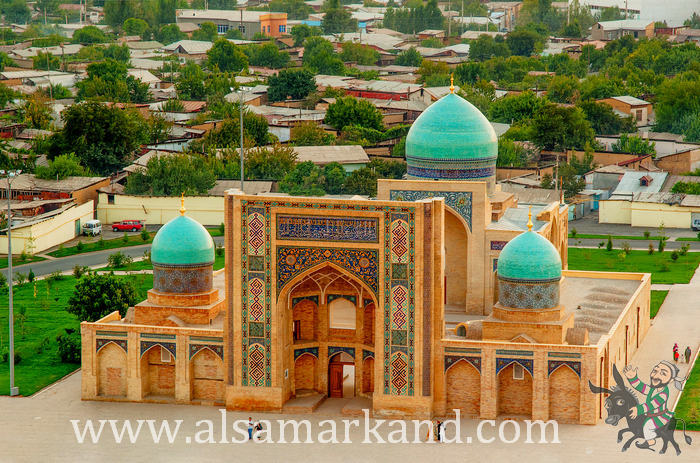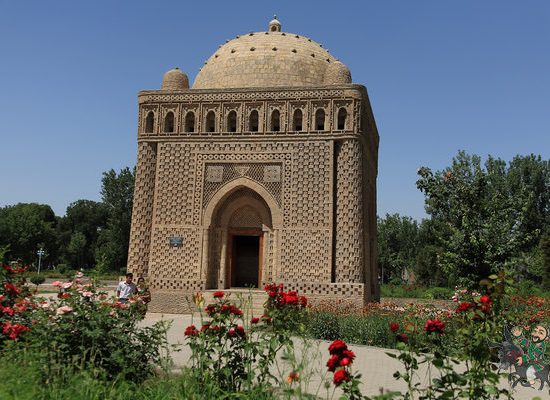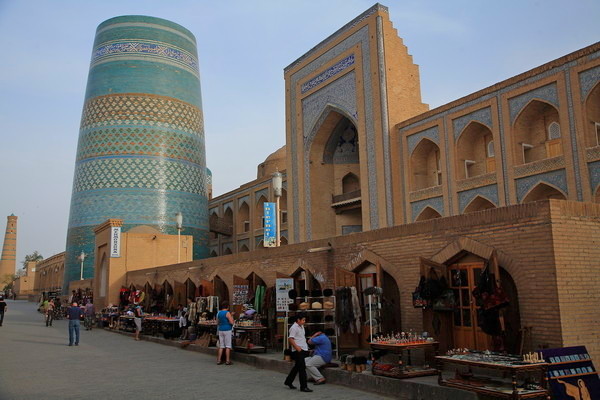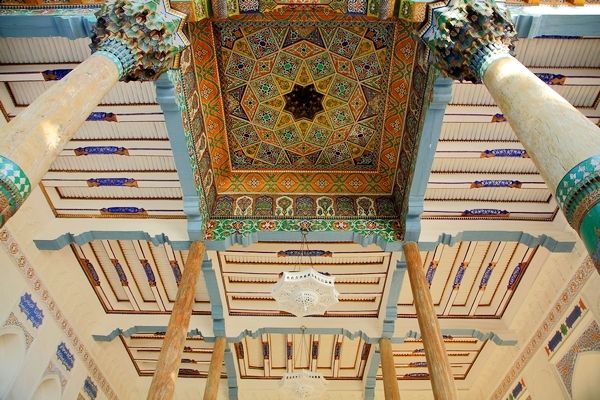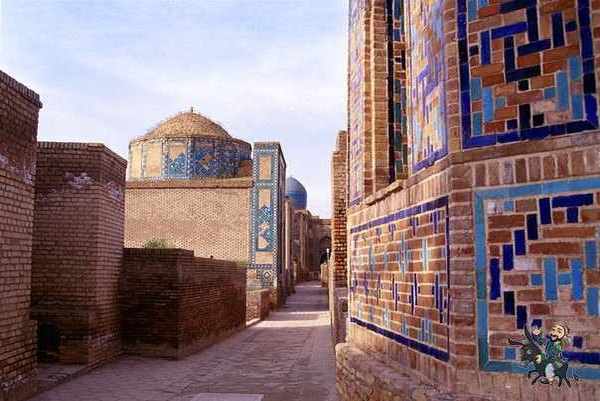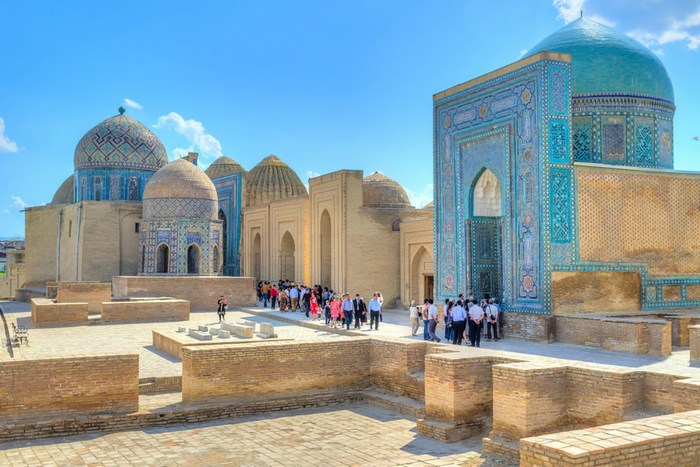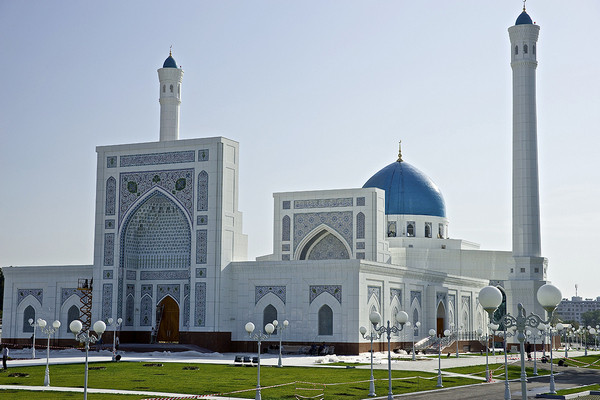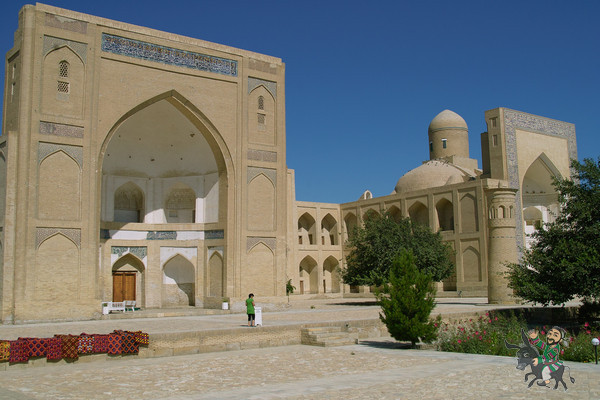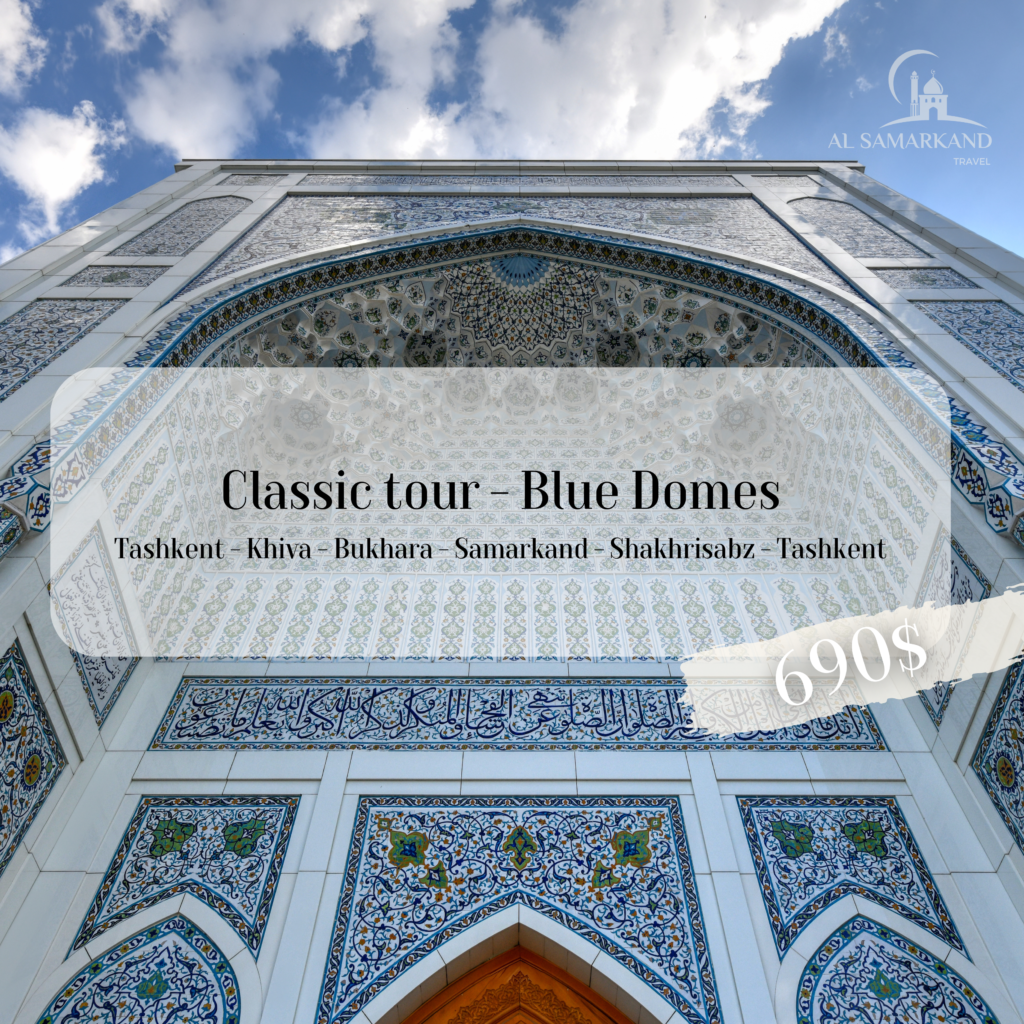Sufism – Tasawwuf
Sufism (Arabic: tasawwuf, from suf – wool) is a mystical and ascetic doctrine in Islam, which began to emerge as a protest against wealth, but the protest was passive. Believers left the cities and went to the countryside, led an ascetic way of life: constant prayers, fasts, getting food only for one day, helping someone in the household.
Gradually, mysticism was added to asceticism, and people began to think about righteous life. Groups of ascetics – mystics began to appear, calling themselves “zahid” (beggar, poor man). They wore clothes made of camel’s hair – “khirka” – a robe with long sleeves tied with a rope.
By the XII century 12 main brotherhoods had formed, in which there was a strict hierarchy: sheikh (pir) – from the Arabic word “shah” (“elder”) – an honorary title of Shiite and Sunni theologians. A sheikh is a mentor in Sufism, under whose guidance beginners are trained.
There were three stages of training of mureeds (disciples): sharia – a state of inner self-discipline; tarikat (“the way to truth”) – a method of mystical knowledge; haqiqat – “truth”, real, authentic existence. Only after passing this stage one could become a deputy sheikh. Over time, sheikhs became rich and influential people in the state. Their murids (disciples) were khans, sultans, and large feudal lords.
Sufism in Central Asia
The specific feature of Sufism in Central Asia was that it did not act as heresy and opposition to Islamic doctrine, but acted within the framework of Sunna and Sharia, i.e. it was absolutely legitimate. Here, in the beginning of the XII century, an independent mystical current in Islam emerged, which was named KHOJAGAN (from Persian – Khwaja – master, master).
In the countries where Islam spread, Khoja is an honorary title of clerics, wealthy officials, feudal lords, and in some cases – poets and writers; a form of address to a teacher. The title -khoja- was worn by members of the Hodjagon brotherhood (not to be confused with -hajji- : a Muslim
Abdulhalik Gijduvani
The chain of spiritual succession (silsila) in the Hojjagon brotherhood goes back to its founder Abd al-Khaliq al-Gijduwani (1103-1179). He reached great heights in Islamic sciences, holiness and piety.
According to written sources, the famous theologian consistently made sure that the confrontation of Muslim trends in Maverannahr (Arabic: the area between the Syr Darya and Amu Darya rivers) ceased, emphasizing the purity of religion.
He urged his fellow citizens to enlightenment, nobility of thoughts and minds, honesty in deeds, and humanism. He created a strict code of conduct for his followers: to shun false worshippers, to perform namaz with their community, not to aspire to be imams or mueddins, to be modest, inconspicuous, to watch their appearance, not to argue with anyone, not to strive for fame.
Gijduvani largely developed the spiritual teachings of Yusuf al-Hamadani, whose follower and associate he became, and formed the rules underlying the Tarikat Khojagon, under which the world Islamic literature refers to the spiritual chain (silsila) of the Naqshbandiyya dervish order.
Al – Gijduvani is buried in the city of Gijduvan at the feet of his mother. Near his tomb in 1433 by order of Mirzo Ulugbek (Tamerlane’s grandson) a madrasa, a mosque and a minaret were built. Mazar Abd al-Khaliq al-Gijduvani became a place of pilgrimage of world significance.
The mystical Khojagon movement, which originated in Bukhara, united the majority of Sufi communities, gained a dominant position, and its postulates became the main spiritual guidance in the life of society.
Its ranks united a huge number of followers, most of whom were extraordinary people and left a bright trace in the history of the state.
These are the famous “seven feasts of Khojagon – Naqshbandi”, who were born in Bukhara district, lived their glorious life here and are buried in their homeland. Their graves today are places of pilgrimage for faithful Muslims from all over the world.
Khoja Muhammad Arif al-Rifghari
One of the most worthy continuers of the tradition and practice of the Hojagon Tarikat, as well as a follower of Sheikh Abd al-Khaliq al-Gijduvani, was Khoja Muhammad Arif al-Rifghari or the holy Khoja Arif “Mohi-Tobon”, who became the second of the seven feasts of Bukhara.
He lived a long and righteous life, died at the age of 103 in 1259 and was buried in his native village of Rivgar, 38 kilometers from Bukhara. A memorial complex has grown on the place of his repose.
Khoja Mahmud Anjir – Fagnavi
The third pir of Bukhara was the recognized authority of Maveronnahr – Khoja Mahmud Anjir – Fagnavi, who was born in the village of Fagnavi, 20 km. from Bukhara. Fagnavi became the successor of the spiritual Sufi tradition after Arif ar-Rifghari, whose disciple he was for a long time.
It is said that the character of the famous Sufi was calm and not angry (he was compared to Prophet Musa). He mastered the craft of carpentry perfectly and earned his living even after he took the place of his teacher Arif ar-Rifghari and gained the right to instruct people on the path of truth.
According to different information, Khoja Mahmud died either in 1286 or in 1307 and was buried in the village of Anjirbog (“fig garden”), where he was born and spent all his righteous life. At present, an austere mausoleum has been erected over the tomb of the saint, and a mosque has been built nearby.
Khoja Mahmud Anjir – Fagnavi
The third pir of Bukhara was the recognized authority of Maveronnahr – Khoja Mahmud Anjir – Fagnavi, who was born in the village of Fagnavi, 20 km. from Bukhara. Fagnavi became the continuer of the spiritual Sufi tradition after Arif ar-Rifghari, whose disciple he was for a long time.
It is said that the character of the famous Sufi was calm and not angry (he was compared to Prophet Musa). He mastered the craft of carpentry perfectly and earned his living even after he took the place of his teacher Arif ar-Rifghari and gained the right to instruct people on the path of truth.
According to different information, Khoja Mahmud died either in 1286 or in 1307 and was buried in the village of Anjirbog (“fig garden”), where he was born and spent all his righteous life. At present, a strictly shaped mausoleum has been erected over the tomb of the saint, and a mosque has been built nearby.
Khoja Ali Romitani
One of the most famous spiritual instructors of the Hojagon school, nicknamed Azizon (“Honorable Sheikh”) – Khoja Ali Romitani or Khoja Azizon was born 20 km from Bukhara in a rather large town Ramitan in 1195.
He lived all his life in the village of Kurgon, where he mastered the skill of weaver. Ali Ramitani was a spiritual disciple of Khoja Mahmud Anjir-Fagnavi, received spiritual initiation from him and later became the fourth of the seven feasts of Bukhara. Khoja Azizon was widely known for his uncommon wisdom and giftedness.
He has many sayings that have been carefully handed down from generation to generation, both orally and in writing. One of them reads: “Watch yourself in two ways – when you speak and when you eat”. There are legends about Ramitani’s medicinal gift, however, he himself claimed that he did not treat people at their request, but did it on the instructions of the Almighty.
The great Sufi spent his life exclusively weaving, always refusing his disciples’ requests to leave his miserable dwelling. Khoja Azizon died at the age of 126 in his native village in the arms of his two sons. A mausoleum was erected over the tomb of the sheikh, a Friday mosque and a number of other buildings were built to receive pilgrims.
Khoja Muhammad Baba – and – Samasi
The fifth in the spiritual chain of the holy feasts of Bukhara was the famous Sufi – mystic, adherent of the Hojagon school – Khoja Muhammad Baba – and – Samasi (in some sources – Simasi). He was born in 1259 in the village of Simas, 15 kilometers from Bukhara.
One of the main achievements of the Guru is considered to be predicting the coming of one of the remarkable Sufi scholars, the founder of one of the most popular currents of Tarikat Hojagon Baha ad – din Naqshbanda.
He entrusted Amir Kulal, who by that time had become his successor, to teach and initiate Baha al-Din into the mysteries of the Khojagon Tariqat. Khoja Baba – and – Samasi died in 1354 at the age of 95, surrounded by his disciples and followers. He was buried in the village of Simas-Romitan district. A mausoleum was erected over his tomb, a mosque and a number of buildings were built to receive pilgrims.
Khoja Sayyid Amir Kulal Bukhari
The sixth feast in the spiritual succession of the Tariqat Khojagonbyl was Khoja Sayyid Amir Kulal Bukhari, nicknamed Kalon (“The Great”) – a scholar – theologian of the Hanafi persuasion, Sufi Mursheed (Arabic – mentor), spiritual mentor of Baha ad – din Naqshband. He was born in 1287 in Sukhar, 11 kilometers from Bukhara, in a family of hereditary potters.
Until the age of 15, the young man practiced folk wrestling Kurash and achieved considerable success in this field. At one of his fights he met his future spiritual mentor Sheikh Muhammad Baba-i-Samasi.
The next day Amir Kulal asked the sheikh’s permission to become his novice and for 20 years he spent in the service of his sheikh, twice a week traveling the distance of 25 km. between Samas and Suhar to accompany his favorite teacher. As time passed, Sayyid Amir reached a certain perfection and was initiated and soon became the fourth deputy of Sheikh Muhammad Baba -and- Samasi. It was then that the Sheikh entrusted him with the further education of his “spiritual son” Baha ad – din Naqshband.
With a huge number of followers, Amir Kulal often spent time in preaching and preaching. After living for about 90 years, he died in 1370 and was buried in his homeland, where he lived all his life. Today there is a memorial complex at his burial place.
Sheikh Baha’ad-din Naqshbandi
Baha ad – din Naqshband was the greatest representative of Central Asian Sufism. The name of the mystical Sufi brotherhood Naqshbandiyya came from the craft he practiced (Naqshband – carver-chaser).
Naqshband laid the organizational foundations of the brotherhood, although, according to tradition, he is not considered its founder, being only the seventh pir. At the same time as comprehending Sufi wisdom, Bahaaddin practiced his craft.
He did not follow the path of most dervishes, who led a wandering life and existed on handouts. After becoming the spiritual leader of the Khojagon Tariqat, Bahaaddin took on the role of a reformer of the Sufi order of dervishes. He spoke against asceticism, against renunciation of worldly affairs, called for labor and knowledge.
In his native village he began farming, sowing a small plot of wheat, barley and mash. One of his sayings says: “Heart to God, hands to labor”. Baha ad-Din considered only the food earned by his own labor to be permissible.
He had no house, wife or land property, and when asked why he had no slave, he replied: “It is incompatible to be a slave of God and a master”. Baha ad – din spent most of his time reading Sufi literature, as well as books on history and philosophy, mathematics and astronomy, and medicine.
Having analyzed Sufi currents, he came to the conclusion that the more Sufi theorists talk about ways of union with God, the further they lead true Muslims away from Islam. Bahā’u’llāh ad-Dīn decided to build his path of Sufism strictly according to the holy scriptures.
He abolished ostentatious piety and rituals that lead away from the true mystic: forty-day fasts, vagrancy, begging, public celebrations with music, singing and dancing. Baha ad – din revived and continued the traditions and views of ‘Abd al – Khaliq Gijduwani, adding 3 more to his basic 8 rules of interpretation.
He attached great importance to the distinction between mere human error and willful unwillingness to follow the righteous path. He considered the latter to be the greatest sin. He did not tolerate deception and those people who put themselves above others.
Being ill and having a premonition of death, Baha ad – din went to one of the caravan-sheds of Bukhara, where he died in March 1389. A huge memorial complex was formed around the tomb of Sheikh Bahaatdin Naqshbandi from the XVI to XIX centuries, which is a place of visit for believers and tourists.
YASAWIA
The brotherhood of itinerant preachers – Sufis – YASAWIYA, organizationally formed in Central Asia by the beginning of the XIII century. It is believed that the founder of the brotherhood was Ahmad al-Yasawi (c. 1105 – 1166) – a Central Asian Sufi poet, founder of the Turkic branch of the Central Asian school of Sufism.
The cult of Yasawi was widespread among the sedentary and nomadic population of Central Asia; masses of believers visited the majestic complex in the city of Yasi (mausoleum, mosque and monastery), erected over his tomb by Timur (Tamerlane) in 1398-1401. Hence Yasawi’s nickname “Hazrat-i Turkestan” (“Lord of Turkestan”).
During the reign of Amir Timur, a mausoleum was also erected over the mazar (place of worship) of Zain ad-din Kui-Arifani (Zainad-din Baba) in Tashkent. His real name was Aihodja, and his nickname was Zengi-ata. He was a disciple and follower of Ahmad al-Yasawi. The year of his birth is unknown and the year of his death is 1258.
In the middle of the 16th century, a religious and political figure, the head of the Sufi brotherhood of Yasawi, Kasim-sheikh Azizan Karminagi, was very revered in Central Asia. He was born in the town of Karmina, which was part of the Bukhara Khanate.
After the death of the head of this brotherhood, Sheikh Hudaydad (1532-33), his duties on the leadership of the brotherhood passed to Kasim-Sheikh. He became the spiritual adviser of the Bukhara ruler Abd Allah Khan (1557-1598). Kasim-Sheikh became famous for his peacemaking activities during the period of internecine struggle of Sheibani-khan’s descendants. In the last third of the 16th century, a memorial complex was erected at the tomb of Kasim-Sheikh, who died in 1578-79. The architectural ensemble, located in the southern part of Karmana, near the ancient cemetery, is named after Kasim-Sheikh.
SUHRAWARDYA
Sufi brotherhood – SUKHRAWARDIYA – was formed in Baghdad at the turn of the 12th-13th centuries. Its actual founder was Omar al-Sukhrawardi (died in 1234), a Sunni theologian who preached moderate Sufi views and actively participated in the political life of Baghdad.
In Central Asia, Shamsad-din Kulal is considered a follower of Suhrawardy’s theory and practice. During the Hajj to Mecca, he joined the Suhrawardiyya Tariqat in the Sufi centers of Iraq and began to spread this doctrine in Maverannahr.
Most sources agree that Sheikh Kulal was the spiritual adviser of Amir Timur (Tamerlane) in his younger years. Kulal lived and preached for a long time in the cities of Karshi and Keshe (Shakhrisabz). He played an important role in introducing the Chagatai clans living there to Islam.
In the first years of his reign, Tamerlane erected a mausoleum over the Sheikh’s tomb in Shakhrisabz. This meant the canonization of Sheikh-Sufi Shams ad-din Kulal as a Muslim saint and the establishment of a cult tradition of his veneration. Almost simultaneously Amir Timur erected a mausoleum in Samarkand for another Sufi sheikh Nur al-Din Basir.
He was blind from birth. According to legend, Nurad-din, due to his holiness, gained his sight. He preached Sufi teachings in Samarkand during the revival of the city after its destruction by the Mongols. He had the highest spiritual degree of Sufis – Kutbi Chahar – dukhum, which means “Fourteenth Pole of the World”. Nurad-din Basir died in 1249 and was buried in Samarkand.
In the middle of the 14th century, the veneration of Sheikh Basir by representatives of traditional Islam was so great that, according to contemporaries, pious people and religious figures passed by his burial place on foot and even took off their shoes.
Sheikh Burhan al-Din Sagardji
One of the biggest personages of Suhrawardy in the mid-14th century was Sheikh Burkhan al-Din Sagardji. In 1345-46, the famous Arab traveler Ibn Batuta met him in China, in Beijing, in the palace of the Mongol Khan, the ruler of China. Here the sheikh was recognized as the “head of the Muslims” (sadr-i jihan), and here he died. Sagardzhi bequeathed to his son to transport his ashes to Samarkand and bury them near the mazar of Nur-ad-din Basir, “below his feet”.
The personality of Samarkand sheikh Nur-ad-din Basir was of great importance for Sagardzhi. In the 80s of the XIV century, considering the sainthood of Sheikh Burhan ad-din Sagardzhi universally recognized, Amir Timur erected a mausoleum over his tomb, known as the mausoleum of Ruhabad. A number of researchers have noted that it was not by chance that the mausoleums of Sheikh Basir, Sagardzhi and Gur-Emir were located on the same axis.

